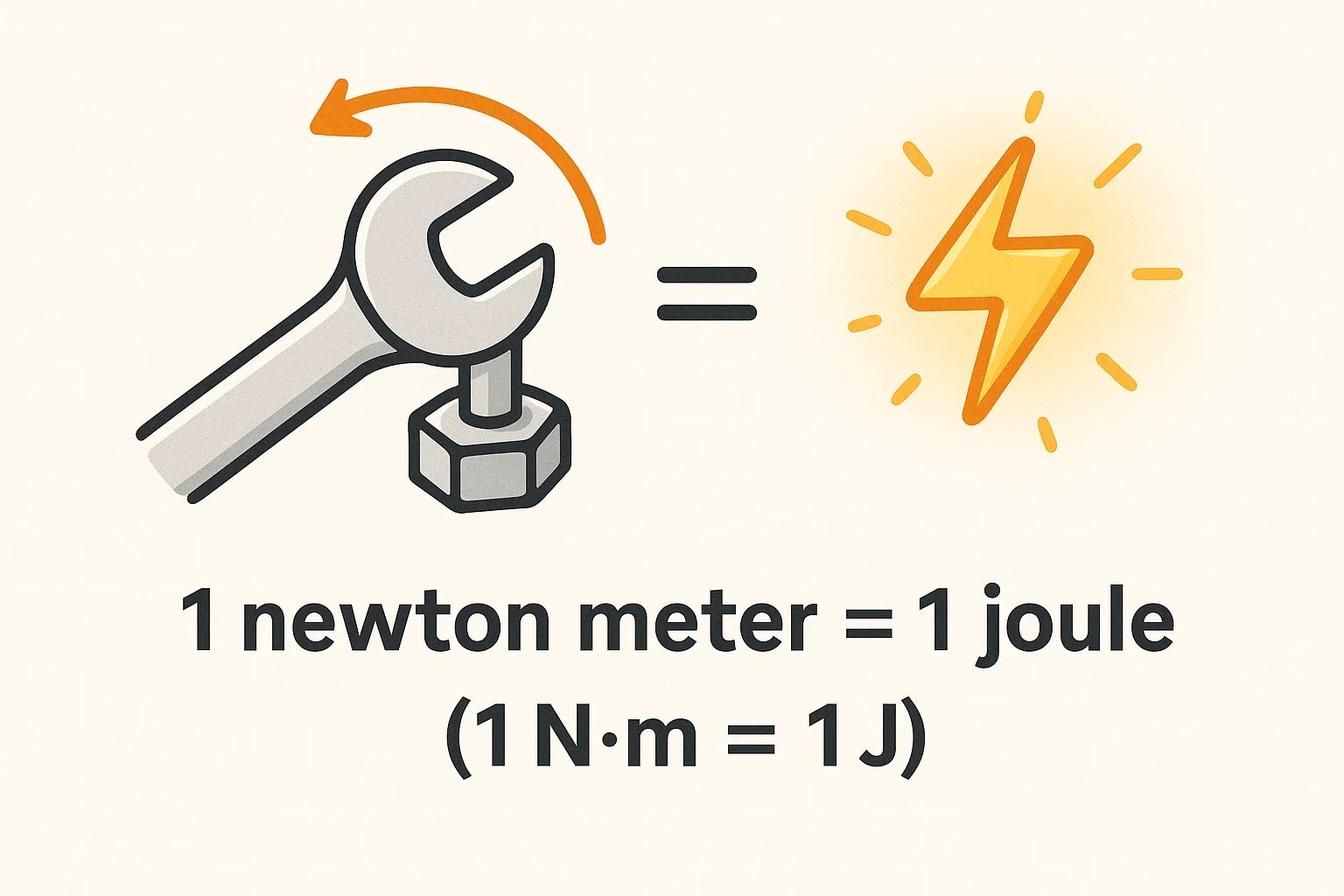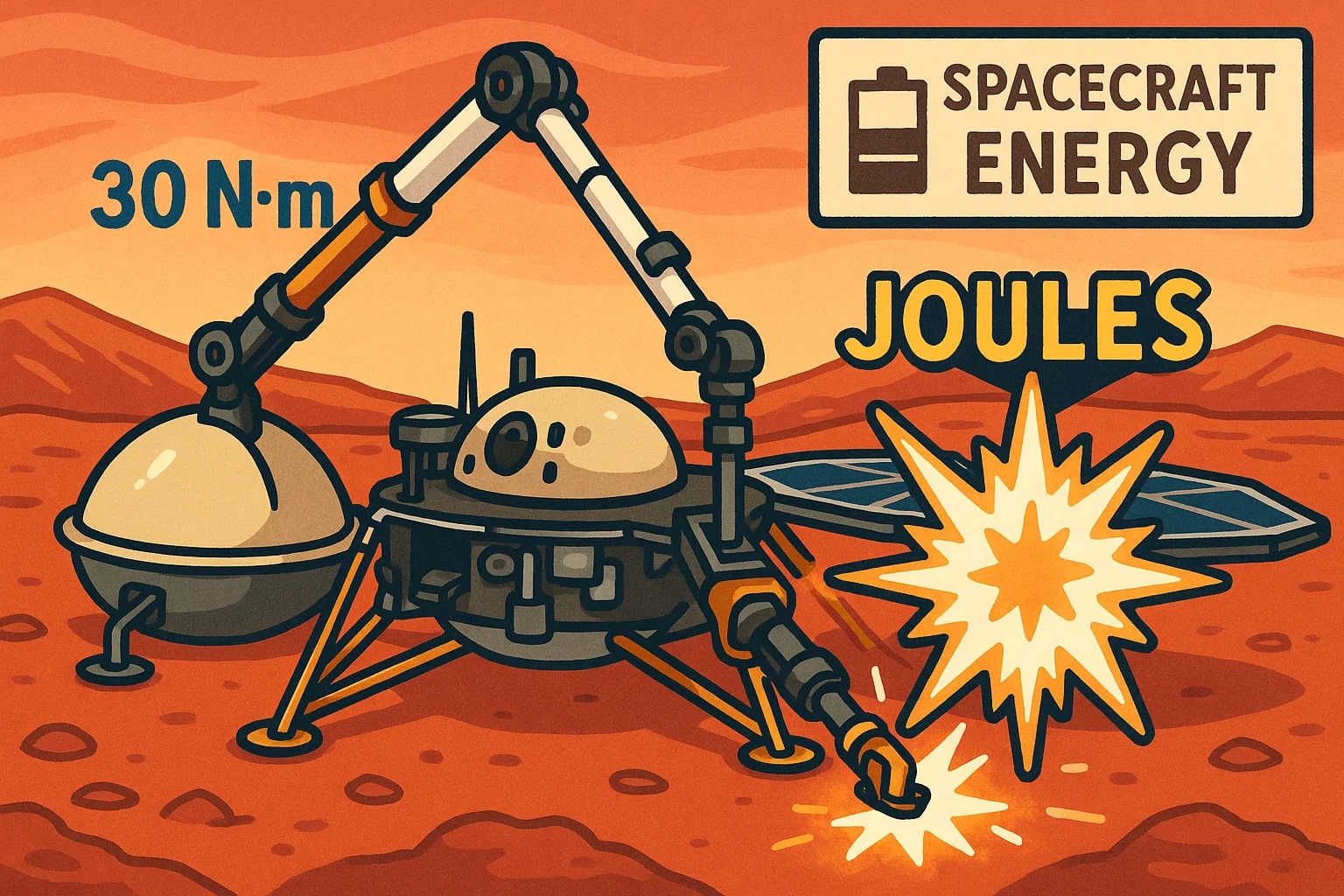Newton Meter to Joule – How to convert N·m to J
The conversion between newton meter and joule is a staple in physics and engineering. These two units are often used interchangeably because they both describe work or energy, but in slightly different contexts — one as torque, the other as pure energy. Understanding their relationship is key in mechanics, thermodynamics, and even everyday engineering tasks. Here’s how to convert them and where official standards apply.

What is a newton meter (N·m)?
A newton meter measures torque, or rotational force. It represents the force of one newton acting at a perpendicular distance of one meter from a pivot point.
It’s commonly seen in:
-
Mechanical engineering, when specifying the torque applied by wrenches or engines.
-
Automotive design, where wheel and engine torque is calculated in N·m.
-
Physics labs, for experiments involving rotational dynamics.
While primarily a torque unit, a newton meter is dimensionally equivalent to a joule — though the two are applied differently.
What is a joule (J)?
A joule is the SI unit for energy and work, defined as the energy transferred when a force of one newton moves an object one meter.
It’s the standard for:
-
Measuring heat, electrical, and mechanical energy.
-
Expressing energy in scientific research, from particle physics to power generation.
-
Linking various forms of energy (thermal, mechanical, chemical) in a single system.
Although both represent newton-meters in their base units, the joule is strictly used for energy, while N·m is conventionally used for torque.
How to convert newton meter to joule
Numerically, the relationship is simple:
1 newton meter = 1 joule (1 N·m = 1 J)
But the application depends on context:
-
Use N·m when referring to torque or rotational force.
-
Use J when referring to energy or work.
Example:
If a torque wrench applies 50 N·m of torque, the energy equivalent (if that force caused one meter of motion) would be:
50 N·m = 50 J.
For instant, accurate results in energy or torque calculations, use our Energy Converter or explore more Conversion tools.
Did you know?
-
The International Bureau of Weights and Measures (BIPM) explicitly defines 1 joule as 1 newton meter, cementing their dimensional equivalence even though they’re used in different contexts.
-
Automotive testing labs frequently record torque in N·m but convert to joules when modeling energy transfer in hybrid and electric drivetrains.
-
In wind turbine engineering, designers often translate rotational torque (N·m) into energy (J) to calculate power output under varying wind conditions.
-
Space missions, including those by NASA and ESA, rely on N·m-to-J conversions to model energy storage and deployment in systems like solar panel deployment mechanisms.
How This Conversion Powers Engineering Decisions
In 2018, engineers designing NASA’s Mars InSight lander had to model the torque used by its drilling and instrument-deployment arms. According to NASA’s mission design reports, torque values were tracked in newton meters, but for energy budgeting across the entire spacecraft, those values were converted into joules.
This allowed engineers to balance mechanical systems with electrical power reserves, ensuring every subsystem could function under Mars’ harsh conditions without draining vital energy reserves.

Wrapping It Up
Converting newton meter to joule is as simple as recognizing their dimensional equivalence: 1 N·m equals 1 J. While the two are used differently — one for torque, one for energy — converting between them keeps calculations consistent across engineering, physics, and applied sciences.
For fast and precise results, use our Energy Converter or explore other Conversion tools to handle every calculation efficiently.

